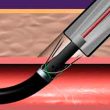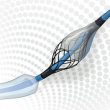Current use of transcatheter aortic valve replacement (TAVR) has increased in intermediate-risk patients and has even been used in low-risk patients. Vascular access-related complications and bleeding are still frequent after transfemoral TAVR, being associated with poor short- and long-term outcomes. Using percutaneous closure devices has allowed operators to close the access site without surgery. The...
EuroPCR 2022 | Should Revascularization Be Performed Before TAVR in Patients with Stable Coronary Disease?
Currently, the American and European guidelines recommend coronary angioplasty in patients with severe aortic stenosis with lesions >70% (Class IIa) who will undergo transcatheter aortic valve replacement (TAVR). However, the benefit of performing a revascularization in these patients is still uncertain. This prospective multicenter study included 2025 patients divided into two groups: complete revascularization (N = 1310)...
Same-Day Discharger After TAVR: Are We There Yet?
Same-day discharge (SDD) has been shown to be effective in angioplasties and some peripheral procedures, but the pandemic—because of the burden it caused on the healthcare system—has forced the optimization of hospitalization times for other pathologies and procedures. This strategy is yet to be tested in transcatheter aortic valve replacement (TAVR) due to the possible...
CHOICE-CLOSURE | Which Closure Device for TAVR is Better?
In patients who undergo transcatheter aortic valve replacement (TAVR) through transfemoral access, a closure device based on plug technology (MANTA VCD) is associated with a higher chance of access-related complications, but with shorter hemostasis time compared with a device with suture technology such as ProGlide VCD. Nowadays, most patients undergo TAVR through transfemoral access. Percutaneous...
Self-Expanding Valve in Extreme Surgical Risk After 5 Years
Patients with aortic stenosis and extreme surgical risk have extremely high mortality due to known comorbidities. The short-term benefit of transcatheter aortic valve replacement (TAVR) with self-expanding valve is clear, and it warrants the procedure in this challenging population. While elderly patients with comorbidities who are at extreme surgical risk might be eligible for TAVR,...
The Transradial Approach Continues to Be the Best for Primary PCI
The transradial approach has been associated to lower mortality and bleeding rates in patients receiving primary PCI for ST elevation MI. This had been called into question by the recent SAFARI-STEMI, but after including its outcomes in a new meta-analysis, the scales tilted slightly in favor of the transradial approach vs. the transfemoral. The transradial...
TCT 2020 | Efficacy of Cerebral Protection Device TriGUARD 3 During TAVR
Cerebral protection device TriGUARD 3, designed to cover all supra-aortic vessels during transcatheter aortic valve replacement (TAVR), is safe to use, according to the outcomes of the REFLECT II study. The technical feasibility of the device, which requires transfemoral access, does not seem to have an impact over clinical events. The primary safety endpoint was a VARC-2-defined...
EuroPCR 2020 | Aortic Valve in Valve in the Long Term
The outcomes of this work are important to plan valve replacement with the largest possible prosthesis allowed by patient anatomy in the index procedure. As a worldwide trend, increasingly more patients are receiving bioprostheses, which have improved a lot but still tend to become deteriorated and require a valve-in-valve procedure if the patient is no...
EuroPCR 2020 | FABOLUS FASTER: In the Quest for the Fastest, Most Potent Platelet Inhibition
This small study tested the pharmacodynamic effects of several antiplatelet agents. It concluded that tirofiban (Aggrastat) provides “more potent and consistent” inhibition of platelet aggregation compared with cangrelor in patients with ST-segment elevation myocardial infarction undergoing primary angioplasty. Thirty minutes after the initiation of treatment, there was a nearly threefold difference between tirofiban and cangrelor...
Europe Advances the Transcaval Approach for TAVR
The transfemoral access is clearly the preferred approach to transcatheter aortic valve replacement (TAVR), followed by the trans-axillary or trans-subclavian. Despite the alternatives, some patients are still ineligible. This study recently published in EuroIntervention reports initial experiences in Europe with the transfemoral transcaval approach. It included 50 patients from 5 centers assessed according to the...









